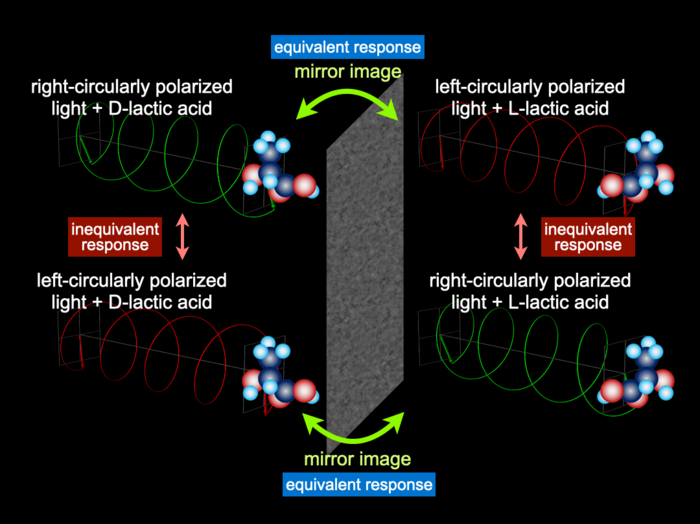Reviewed by Mila PereraSep 22 2022
Chirality is the quality of a structure that prevents it from superposing on its mirror counterpart. Chiral materials react differently to light with left- and right-circular polarization.
 Chiral materials exhibit the characteristic feature that they respond differently to left- and right-circularly polarized light (optical activity). The response of D-form molecule to left-circularly polarized light is same as that of L-form molecule to right-circularly polarized light, and vice versa. Image Credit: NINS/IMS
Chiral materials exhibit the characteristic feature that they respond differently to left- and right-circularly polarized light (optical activity). The response of D-form molecule to left-circularly polarized light is same as that of L-form molecule to right-circularly polarized light, and vice versa. Image Credit: NINS/IMS
It was theorized that left- and right-circularly polarized light would exert differing optical forces on chiral materials.
The study team employed an experimental optical trapping method at the Institute for Molecular Science and three other universities to observe the circular-polarization-dependent optical gradient force acting on chiral gold nanoparticles.
The experiment utilized both D-form (right-handed) and L-form (left-handed) chiral gold nanoparticles. Despite being theoretically expected, the optical gradient force that chiral nanoparticles experience has never been observed.
By optically trapping the chiral gold nanoparticles, the study team observed the optical gradient force arising from the chirality (i.e., the difference between the gradient force by left- and right-circularly polarized light).
The results indicated that the optical gradient force was distinct for particles in the D- and L-forms.
They also discovered a previously unrecognized effect on the mechanism of the chirality-dependent optical forces based on the force’s dependency on the wavelength of the light employed.
The current study clarifies the properties of the circular-polarization dependent optical gradient force on the mechanics of chiral gold nanoparticles.
It demonstrates the potential for separating chiral materials with the optical force, which may be accomplished and could expand the applications by trapping the materials with locally limited light produced on nanostructures or exploiting the optical force in other ways.
Journal Reference
Yamanishi, J., et al. (2022) Optical gradient force on chiral particles. Science Advances. doi:10.1126/sciadv.abq2604.